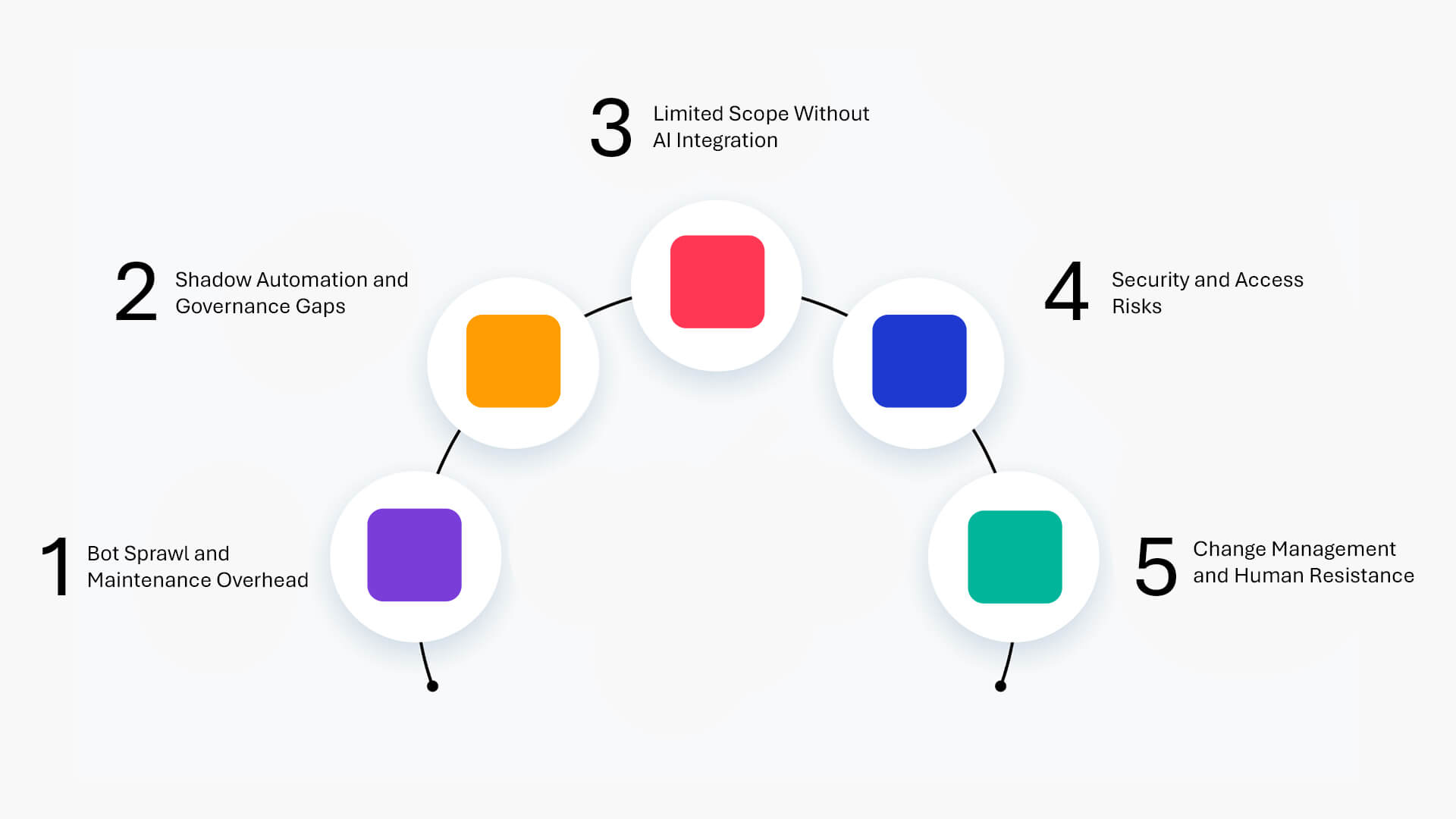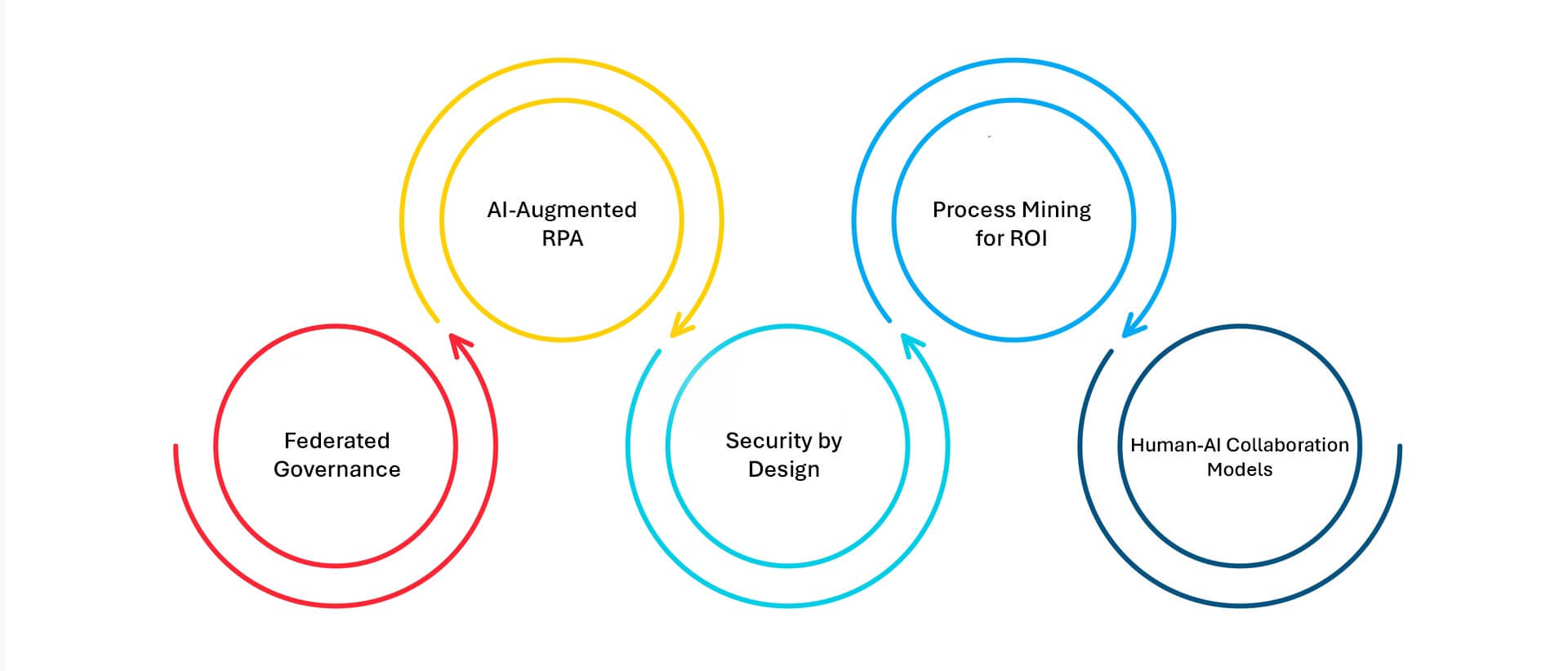Robotic Process Automation (RPA) is a technology that uses software bots to automate structured, repetitive business processes without altering existing systems. These bots mimic human interactions with digital systems—like logging into applications, extracting data, filling forms, and moving files—enabling enterprises to streamline operations, reduce errors, and boost efficiency.
RPA in the Context of AI, Compliance, and Data Governance
RPA is no longer just about automating back-office workflows—it’s now a strategic lever for AI readiness, regulatory compliance, and digital agility. As enterprises scale data-centric operations, RPA bridges fragmented systems, digitizes legacy processes, and enables standardized data flows, which are critical for training AI models or executing real-time analytics.
In sectors like finance, healthcare, and telecom, RPA also plays a pivotal role in compliance reporting, data entry validation, consent tracking, and audit preparation. When combined with AI and Natural Language Processing (NLP), RPA evolves into Intelligent Automation—capable of making decisions, adapting to inputs, and enforcing governance policies across the data lifecycle.
Key Challenges in Scaling RPA

- Bot Sprawl and Maintenance Overhead
As RPA adoption grows, so does bot complexity. Enterprises often struggle with maintaining bot inventories, updating scripts, and ensuring version control.
- Shadow Automation and Governance Gaps
Without proper oversight, business users can create bots outside IT’s visibility, increasing risks of non-compliance, data leakage, or process failures.
- Limited Scope Without AI Integration
Traditional RPA is task-oriented and deterministic. Without AI augmentation, it lacks the adaptability needed for unstructured data, cognitive decisions, or variable inputs.
- Security and Access Risks
Bots often require elevated privileges to access multiple systems. If not properly monitored, they become targets for credential abuse or insider threats.
- Change Management and Human Resistance
Automating jobs without redesigning roles can create anxiety, workflow clashes, or underutilized human potential—hampering the value of RPA investments.
Strategic Solutions for Intelligent RPA Adoption

- Federated Governance
Embed RPA into centralized IT and compliance workflows. Use access controls, policy enforcement, and usage audits to track who is building what, and why.
- AI-Augmented RPA
Combine RPA with AI/ML to handle document classification, data extraction, voice recognition, and adaptive decision-making—unlocking intelligent automation.
- Security by Design
Apply Zero Trust principles to RPA: enforce just-in-time bot access, credential vaulting, and activity logging. Bots should be as monitored and governed as human users.
- Process Mining for ROI
Use process mining tools to identify automation candidates with the highest value and least complexity—prioritizing those that support compliance, audit, or ESG tracking.
- Human-AI Collaboration Models
Instead of replacing roles, redesign them. Use RPA to remove low-value tasks and upskill employees to supervise, train, and innovate on automation pipelines.
The Future of RPA: Autonomous, Contextual, and Responsible
The next generation of RPA will be deeply embedded within enterprise fabric—not just as a utility, but as a strategic control layer. Bots will operate autonomously, respond to contextual triggers, and integrate with APIs, AI engines, and cloud platforms in real time. More importantly, RPA systems will be built with governance, ethics, and accountability at their core—supporting audit trails, explainable decisions, and compliance with AI regulations like the EU AI Act or India’s DPDP.
In a world where agility is non-negotiable and data is currency, RPA will be a foundational tool for executing digital strategy at scale—faster, safer, and smarter.
Getting Started with Data Dynamics:
- Learn about Unstructured Data Management
- Schedule a demo with our team
- Read the latest Blog: The Sovereign AI Paradox: Building Autonomy Without Breaking the Business






